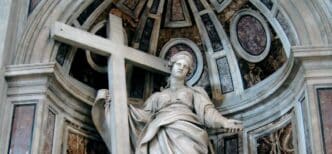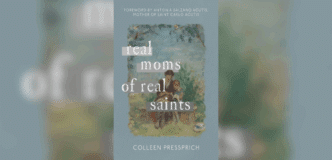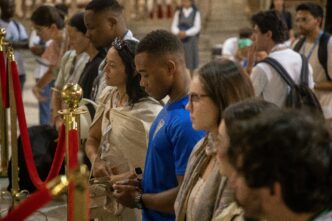When Cardinal Giuseppe Sarto was elected pope in 1903, many thought that the Church could relax after the impactful years of Leo XIII, since the new pontiff was a quiet, prayerful, humble man, not given to controversy.
However, in the 11 years of his papacy, Pope St. Pius X changed the Church by changing the liturgy and energizing Catholic piety.
Pius X’s great love was for the Eucharist. He wanted to make the Eucharist available to people.
What changed because of him? At the time, it was longstanding custom to delay first holy Communion almost until adolescence. Pius X felt that children should receive holy Communion as soon as they could separate right from wrong, and understand, and believe, that the Eucharist truly is the body and blood of Christ.
Because of his direct action, the current standard for first holy Communion began.
Even for adults in the state of grace, receiving holy Communion was rare — a result of a misguided but widespread notion that no one, however devout, was worthy of receiving the Eucharist.
At Sunday Masses, few received Communion. At a wedding, perhaps the bride and groom received holy Communion, but no one else. Communion was never offered at funeral Masses. Parishes gave little attention to daily Masses.
All that changed. Pius X urged not just regular, but even daily attendance at Mass and reception of holy Communion, and his ideas were embraced.
Catholic schools brought students together for daily Mass. Masses accompanied major events, graduations, anniversaries. Some parish churches were filled on weekdays with worshippers attending Masses. In large cities, downtown churches catered to the many Catholics who wanted to go to Mass and receive Communion before going to work in nearby office buildings. Churches near factories were busy. Publishing Missals for the laity was a big business.
Eucharistic devotions were frequent and popular: Benediction, adoration, Forty Hours.
‘Pray the Mass’
In those days, the celebration of Mass was, in many respects, a performance. The priest, who spoke in Latin, was required almost to be inaudible when reciting the prayers. Some parishes had choirs, often not very good. Some hymns known by the people were forbidden due to their origins or wording. Time during Masses was filled by someone standing before the congregation and leading it in the Rosary, a litany or other prayers.
A slogan echoed Pius X: “Do not pray during Mass. Pray the Mass.” He wanted congregations, not just choirs, to sing parts of the Mass. He urged a revival of Gregorian chant, the musical setting of the Mass prayers devised by the Benedictines a millennium earlier.
To achieve these goals, seminaries revised curricula. Dioceses set policies. A national school, named for the pope, formed in New York just to train parish music directors to lead congregations in singing the prayers.
Not every effort succeeded. Practical considerations got in the way — money, available talent and so on. Appreciation and piety cannot be forced. Still, it was a golden age for the holy Eucharist.
Pope Pius XII, as a young priest, had greatly admired Pius X’s love for the Eucharist and for the liturgy. During his own papacy from 1939 to 1958, Pius XII instituted sweeping changes in Catholic worship, jarring for some at the time, but now long since settled into the routine. Why his changes? He knew that too many regarded the liturgy as dull and inexpressive, and, after all, Catholic liturgy is a story of evolution.
In 1962, Pope St. John XXIII convened the Second Vatican Council. The pope, and the council, supported furthering the liturgical initiatives of Pius X and Pius XII.
Then came Pope St. Paul VI, who worked in the Vatican with Pius XII, and for whom Pius XII was an inspiration.
Paul VI significantly reformed the Roman rite, but his decisions only completed what Pius X had begun and Pius XII had continued — always returning to the core, always yearning to make the Eucharist and the liturgy better loved.








